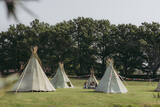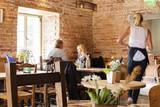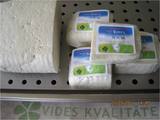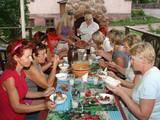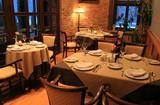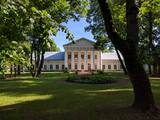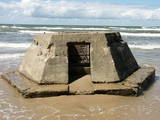| Nr | Nosaukums | Apraksts |
|---|---|---|
|
Kurzemē un Zemgalē hercogs Jēkabs valdīja no 1642. līdz 1682. gadam, tajā laikā strauji attīstījās kuģu būve, parādījās pirmās manufaktūras un uzlabojās lauksaimniecības ražošanas apjomi. Kuģi eksportēja preces uz Eiropu, devās uz Tobago un Gambiju, dibināja tur kolonijas un veda uz Eiropu cukuru, kafiju un garšvielas. Šajā periodā Latviju sasniedza kartupeļi, ko vietējie iedzīvotāji iemīļoja vien pēc pāris gadsimtiem. |
||
|
Parka „mugurkauls” ir Šventojas (Šventoji) upes (tulkojumā – Svētā upe) ieleja. Šventojas krastā ir apskatāms viens no Lietuvas iespaidīgākajiem Devona perioda smilšakmens atsegumiem - Vetygalos atodanga, bet Varius strauta krastos – kvarca smilšu atsegums - Variaus atodanga. 6 km dienvidos no Anykščiai atrodas otrs Lietuvas lielākais dižakmens (5,7 m augsts, ~ 100 m3) – Puntukas akmuo.
|
||
|
Ļoti ainavisks Rēzeknes – Dagdas - Krāslavas ceļa posms ~ 2 km garumā ar skatu uz Rāznas ezeru un Mākoņkalnu (gaisa līnijā attālums – 10 km) ezera pretējā pusē. |
||
|
Glempings atrodas Auces novadā. Tā ir atpūtas vieta ar privātu teritoriju, kurā rast jaunas izjūtas, nakšņojot vigvamos, saplūst ar dabu, baudīt klusumu un mieru tālu no pilsētas, redzēt briežu un stirnu barus, supot apkaimes ūdeņos, doties pārgājienā pa meža takām, šaut ar loku un baudīt dabiskas ainavas skaistumu. Vigvamā ir glempinga telts cienīgas ērtības - gulta, interjera priekšmeti, āra terase. Viesiem tiks piedāvātas arī brokastis. Uzņēmums "Nomadic Homes" piedāvā arī iegādāties vai noīrēt vigvamus privātiem pasākumiem, atpūtai vai sava biznesa uzsākšanai. |
||
|
Apskatāmas dažādu vēsturisko periodu un tautu tradicionālās rotaļlietas, atvērta spēļu un leļļu meistarošanas darbnīca. |
||
|
Ungru Resto ir piejūras restorāns Hījumā ziemeļu krastā, kur atmosfēru rada kādreizējā muitas māja, Suursadamas vide, kvalitātīvs ēdiens un apkalpošana. Ēdienkartē tiek izmantotas vietējie produkti un tiek gatavoti tradicionālie Hījumā salas ēdieni, pasniegti mūsdienīgā stilā. Restorāns Ungru Resto - iesaka White Guide 2018. |
||
|
This tour includes a walk along the Baltic Sea coast Lithuania through the Curonian Spit from Nida to Smiltynė (see a detailed description under tour No. 9) and continues further north from Klaipėda to Šventoji located at the Lithuanian/Latvian border. Klaipėda and Palanga are popular seaside resorts with lots of pubs, hotels, street cafés and musicians. Klaipėda is the only port city and the third largest city in Lithuania. Šventoji is also a popular seaside town located next to the mouth of the river Šventoji. Between Klaipėda and Palanga, the Baltic Coastal Hiking Route leads through the Seaside Regional Park (Lithuanian: Pajūrio regioninis parkas). It was founded for the protection of coastal and marine landscapes, biodiversity and local cultural heritage. The most famous place of the seaside is the Dutch Hat (also called Dutch Cap, Dutchman’s Cap or Holland’s Cap) – a 20 m high cliff, which used to serve as a landmark and guide for seafarers and fishermen. |
||
|
Atrodas Tirdzniecības kanāla dienvidu krastā, kas padomju laikā bija slēgta zona ar pierobežas režīma statusu. Tagad lieliska pastaigu vieta, kur var vērot kuģīšus un jahtas. Promenādes visā garumā izvietojušies vēsturiskie spīķeri. Šeit meklējami krodziņi, viesnīcas, mūzikas klubs, mākslas galerija un Dzintara pulkstenis. |
||
|
Krēslainajā muižas pagrabā var noklausīties stāstījumu par mājas vīna izgatavošanas mākslu un degustēt rabarberu, upeņu un zemeņu vīnu kopā ar apkārtnē saražotajiem lauku labumiem (siers u.c.). Vīns tiek gatavots, izmantojot vietējo zemnieku saražoto produkciju. |
||
|
Piedāvā ekskursiju pa saimniecību ar kazu, zirgu, trušu, putnu un mājdzīvnieku apskati. Interesenti var pieteikties uz reiterapijas seansiem, vizināties zirgā, uz ponija un pajūgā. Kazkopības produkcijas – piena, siera, biezpiena, kefīra un jogurta iegāde. |
||
|
Alūksnes novada saimniecībā "Pauguri" kokamatnieks Jānis Vīksne izgatavo koka virpojumus - cibiņas, pulksteņus, pildspalvas, spēles, šūpoles un citas saimniecībā noderīgas lietas. Iespējams iegādāties kokamatniecības suvenīrus - dekoratīvus un praktiskus virpojumus no koka. Senlietu muzeja apskate - seni galdniecības darba galdi, ēveles, āmuri, sirpji, grābekļi, sējmašīna, pulksteņi, trauki u.c. Saimniecībā ir izveidota skatu platforma, no kuras paveras skats uz Hānjas augstienes ainavām Igaunijā, kā arī atpūtas vieta vasaras piknikam ar galdu, uguskura vietu un skulptūrām. |
||
|
"Spēlmaņu krogs" atrodas Alsungas centrā pie Dižgabalkalna. Krogā var nobaudīt sklandraušus un uz vietas ceptu suitu skābmaizi. Vasarās tūristu grupas uz āra kamīna var piedalīties suitu ēdienu (ķiļķēni, žāvētas ribas u.c.) gatavošanas procesā vai mieloties jau pie klātiem galdiem suitiskā garā, kā arī baudīt Suitu sievu (unikālais burdona dziedājums) iespaidīgo priekšnesumu. |
||
|
Restorāns atrodas Gulbenes pilsētas vēsturiskajā centrā, pilnībā atjaunotajā 19. gs. Vecgulbenes muižas kompleksā, zirgu manēžas ēkā. Šeit atrodas arī bārs, kurā laipni gaidīts ikviens pilsētas iedzīvotājs un viesis. Piedāvājumā ir plaša sezonālā ēdienkarte un biznesa pusdienas. Restorāna telpās un āra terasē (vasarā) ir iespējams izvietot līdz 60 viesiem. |
||
|
Atrodas Rīgas ielā 8 – skaistā, 1883. g. celtā jūgendstila ēkā . Muzejs (viens no Latgales lielākajiem un vecākajiem) tajā darbojas no 1959. g. (pats muzejs dibināts 1938. g.) un tā krājums vēsta par Daugavpils un tās apkārtnes vēsturiskajiem notikumiem. Tajā regulāri tiek rīkotas arī tematiskās izstādes, piedāvātas muzejpedagoģiskas programmas. Te vēl var apskatīt Daugavpilī dzimušā un pasaulē pazīstamā mākslinieka Marka Rotko (1903. – 1970.) gleznu reprodukcijas, kuras no 2013. gada plānots pārcelt uz M. Rotko centru Daugavpils cietoksnī. |
||
|
Takas sākums atrodas Vidagā, vietā, kur uz Vizlas celts vēsturiskais akmens arkas tilts. 1,2 km garā taka bez marķējuma ved gar pašu upes krastu līdz pat ietekai Gaujā. Redzami skaisti dolomīta atsegumi, nelieli krāčveidīgi ūdenskritumi un iespaidīgais Žākļu dižakmens. |
||
|
Dviragio ezera salā atrodošie Salu muiža un parks no putna lidojuma atgādina Lietuvas kartes aprises. Muižas saimniecības austrumu pusē esošais parks – jaukta plānojuma. Tas ir viens no senākajiem parkiem Lietuvā. Vēl Radviļiem saimniekojot, te bija meža parks, kurā koki netika cirsti. Parkā valdīja vietējo sugu lapu koku – kļavas, liepas, oši, apses, kuri šobrīd jau ir divi simtu gadu veci. Uz ezera pusi stiepjošā taka savieno aleju ar parka taku pie ezera. Līdz mūsdienām ir saglabājušies apstādījumi, aleju fragmenti. |
||
|
This tour is suitable only for experienced hikers. The itinerary circles the Suurupi Peninsula where the dense forests conceal the military heritage of different eras. The Baltic Coastal Hiking Route meanders through overgrown and rocky seacoasts, birch groves, along former pioneer camps and sand-stone cliffs protecting coves with sharp capes. At the end of the itinerary, one of the most astounding outcrops of the Estonian littoral rises before your eyes – the Rannamõisa Cliffs, which gives views of Kakumäe Bay and Peninsula and the towers of Tallinn’s Old Town |
||
|
No baterejas līdz mūsdienām ir saglabājušās dzelzsbetona dzota paliekas, kas ilgstošā vēja un viļņu darbības rezultātā, noskalojot krastu, ir noslīdējušas līdz pat liedagam. Interesants vēstures piemineklis, kura liktenis ilgtermiņā ir nojaušams – tas pazudīs zem jūras līmeņa.
|
||
|
Bruknas muiža ir negaidīts pārsteigums šajā vietā un laikā. Muižas pils celtniecību uzsāka 18. gs. vidū un vēl pēc gadsimta - pārbūvēja. 20. gs. pirmajā pusē muižas pilī izvietoja pamatskolu, bet Padomju laikā - iekārtoja dzīvokļus. Tagad muižas pils ir atdzimusi jaunā kvalitātē – gan pēc formas, gan satura, - gan tiešā, gan pārnestā nozīmē. Te darbojas sabiedriskā organizācija „Kalna Svētību kopiena”, vasarās notiek bērnu un jauniešu nometnes u.c. pasākumi. Ēkas iekšpusē ir saglabājušās vecās vītņu koka kāpnes, logu aiļu slēģi un misiņa durvju viras. Tiek celta baznīca. Iepazīstams ir no kultūraugiem veidotais renesanses stila dārzs. Iepriekš piesakoties, ēkas un arī netālu, pašu iemītnieku rokām uzcelto baznīcu var apskatīt arī no iekšpuses, vietējo iemītnieku pavadībā, kas izstāsta arī muižas un dārza vēsturi un notikumus. 300 m dienvidrietumos no muižas atrodas Bruknas pilskalns, taču to dabā ir grūti atpazīt un vēl grūtāk sasniegt. |
||
|
Dabas liegums veidots jūrmalas pļavu (Latvijā rets biotops) aizsardzībai, kas atrodas Lielupes grīvā – upes kreisajā krastā. Šeit atrodas viena no lielākajām purva mātsaknes atradnēm Latvijā. Nozīmīga putnu ligzdošanas vieta. Teritorija nav labiekārtota apskatei, tādēļ to ieteicams aplūkot no Lielupes pretējā (labā) krastā esošās Baltās kāpas, no kuras paveras plaša un pārskatāma ainava uz upes grīvu, palieņu pļavām un niedrājiem.
|
||




